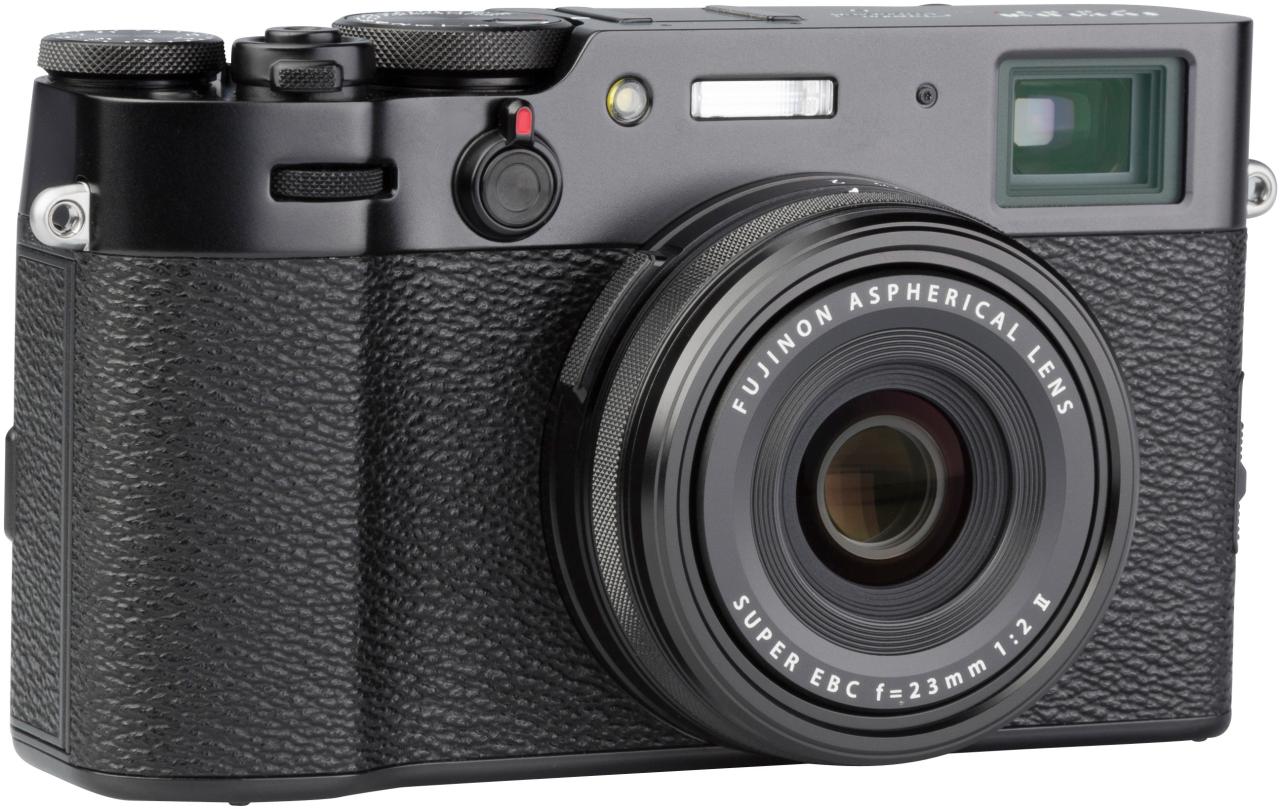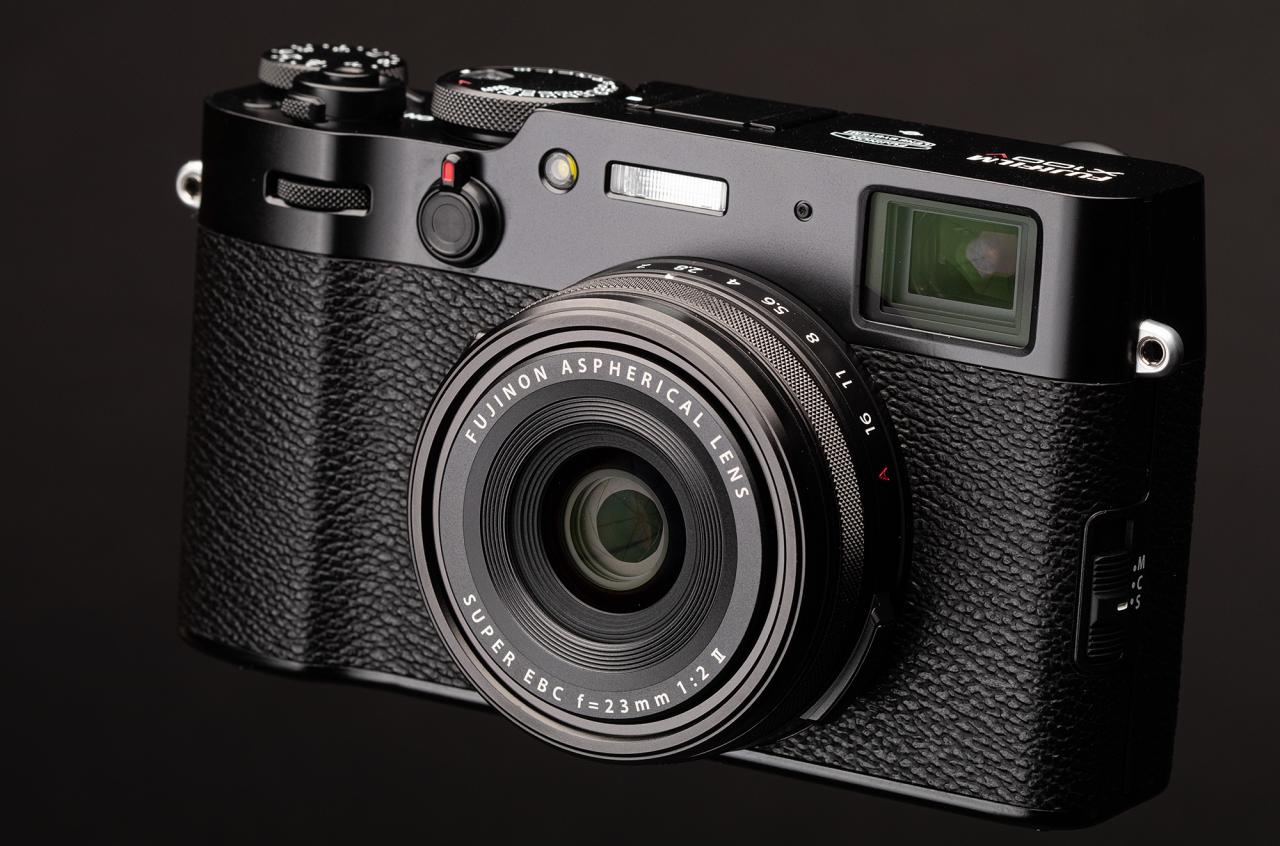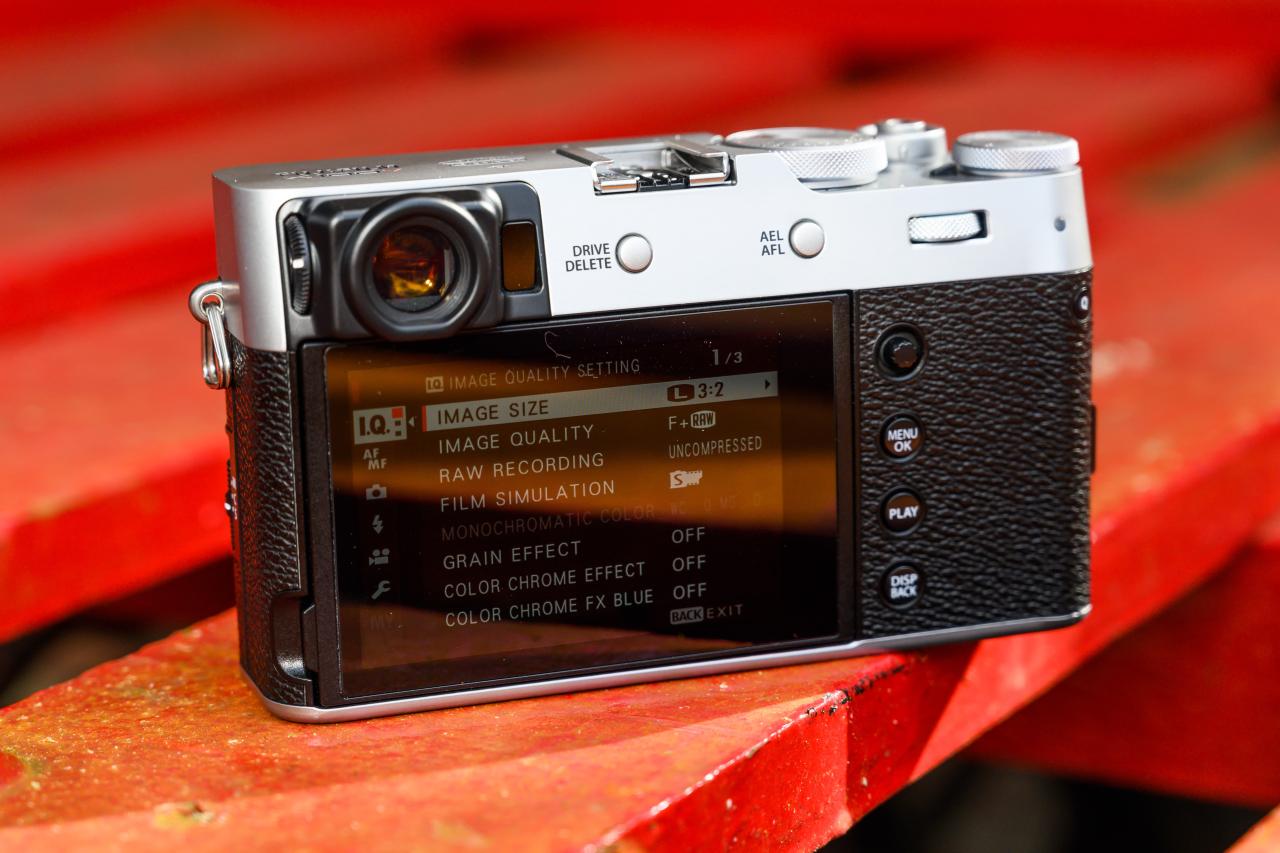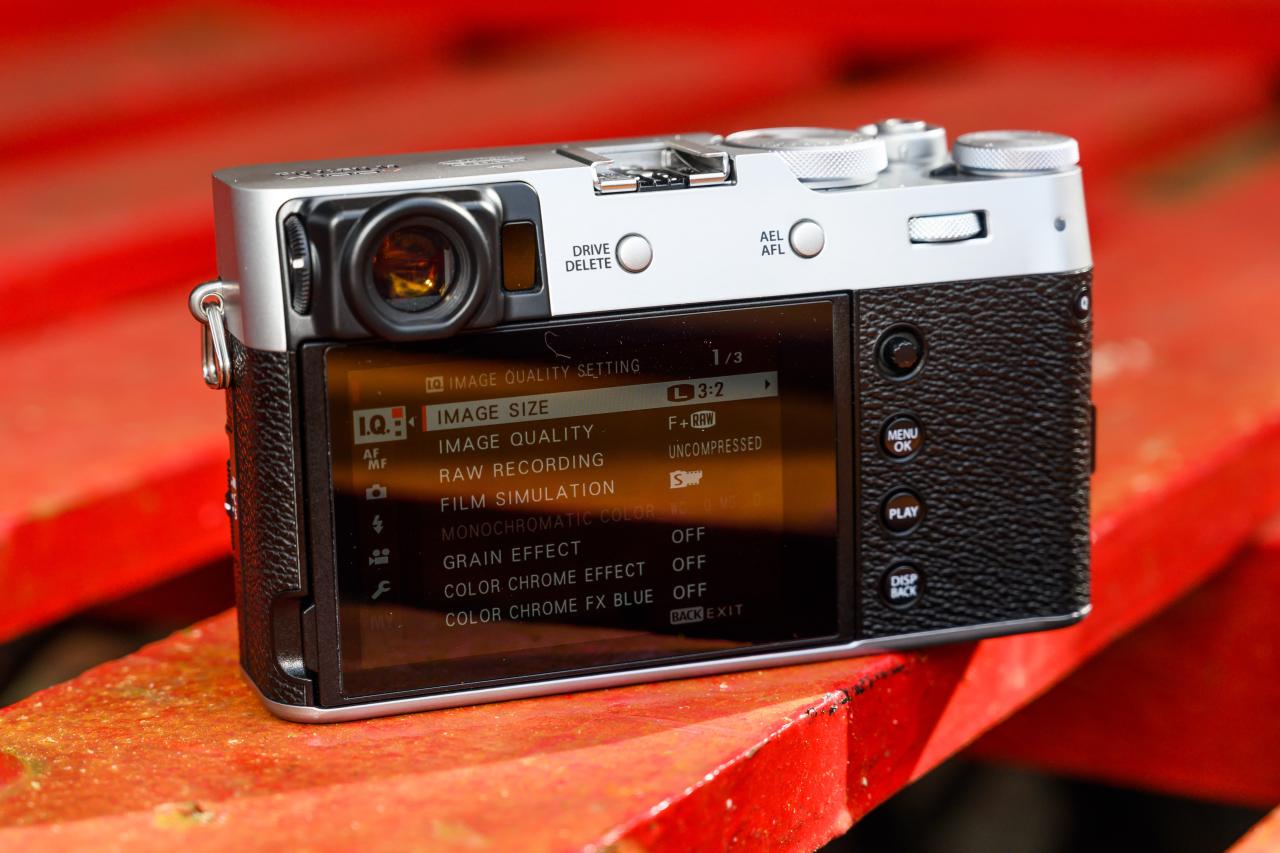The Fujifilm X100V immediately captivates with its retro-chic design and exceptional image quality. This review delves into the camera’s core features, performance in diverse shooting scenarios, and overall user experience, providing a balanced perspective for potential buyers and seasoned photographers alike. We’ll explore its strengths and weaknesses, comparing it to its predecessors and competitors to help you determine if the X100V is the right fit for your photographic journey.
From its refined ergonomics and intuitive controls to its impressive film simulations and robust autofocus system, the X100V offers a compelling blend of classic aesthetics and modern technology. We’ll examine its image processing capabilities, explore its versatility across various photography genres, and discuss the range of accessories available to expand its functionality. This detailed analysis aims to equip you with the knowledge necessary to make an informed decision.
The Fujifilm X100V’s compact size makes it ideal for street photography, capturing spontaneous moments with its excellent image quality. Planning a road trip, however, requires checking conditions beforehand, and for that, I often consult the coquihalla weather camera to ensure clear skies for my photographic adventures. Then, it’s back to the trusty X100V to capture the stunning landscapes.
Fujifilm X100V: A Deep Dive into the Iconic Compact Camera
The Fujifilm X100V continues the legacy of its predecessors, offering a compelling blend of retro aesthetics, exceptional image quality, and user-friendly functionality. This in-depth review explores its key features, performance, and overall user experience, comparing it to its lineage and competitors to provide a comprehensive understanding of this celebrated compact camera.
Fujifilm X100V Camera Overview
The X100V boasts a 26.1MP X-Trans CMOS 4 sensor, paired with a fixed 23mm f/2 lens (35mm equivalent). Its hybrid viewfinder combines an optical viewfinder (OVF) with an electronic viewfinder (EVF), offering flexibility for various shooting styles. The camera features a robust magnesium alloy body, weather resistance, and a refined, intuitive control layout. The tilting touchscreen LCD enhances usability, particularly for shooting from awkward angles.
X100V vs. Predecessors: A Feature Comparison
| Feature | X100 | X100T | X100F | X100V |
|---|---|---|---|---|
| Sensor | 16.3MP X-Trans CMOS I | 16.3MP X-Trans CMOS II | 24.3MP X-Trans CMOS III | 26.1MP X-Trans CMOS 4 |
| Lens | 23mm f/2 | 23mm f/2 | 23mm f/2 | 23mm f/2 |
| Viewfinder | Hybrid OVF/EVF | Hybrid OVF/EVF | Hybrid OVF/EVF | Hybrid OVF/EVF (improved EVF) |
| Screen | Fixed LCD | Fixed LCD | Fixed LCD | Tilting Touchscreen LCD |
| Body | Aluminum | Aluminum | Aluminum | Magnesium Alloy (weather resistant) |
The fixed lens system presents both advantages and disadvantages. The advantage lies in its compact size and consistent optical performance, optimized specifically for the sensor. The disadvantage is the lack of flexibility to change lenses, limiting versatility for various shooting situations.
Image Quality and Performance

The X100V’s image quality is exceptional, delivering sharp detail, vibrant colors, and excellent dynamic range. The X-Trans CMOS 4 sensor minimizes moiré and color artifacts, even in challenging lighting conditions. Low-light performance is also impressive, producing clean images with minimal noise at higher ISO settings. The 23mm lens consistently renders images with pleasing sharpness and minimal distortion.
The autofocus system is fast and accurate in most situations, effectively tracking subjects in motion. However, in extremely low-light conditions or with fast-moving subjects, it might struggle slightly. The camera’s JPEG engine produces beautifully rendered images directly from the camera, while RAW files offer extensive post-processing flexibility for fine-tuning details.
Film Simulations and Creative Control
Fujifilm’s renowned film simulations are a core strength of the X100V. These emulations of classic film stocks allow users to achieve unique aesthetic looks directly in-camera, reducing the need for extensive post-processing.
The Fujifilm X100V’s compact size makes it ideal for street photography, capturing candid moments with its exceptional image quality. Imagine using it to document a picturesque scene, perhaps checking the live conditions beforehand with a quick glance at the port dover live camera to plan your shot. Then, armed with that knowledge, you can head out and capture stunning images with your X100V, knowing exactly what light and weather conditions to expect.
- Classic Chrome: Subdued colors and muted tones, ideal for creating a vintage look.
- Provia: Natural and balanced colors, a versatile option for various scenes.
- Velvia: Highly saturated colors and increased contrast, best for landscapes and vibrant subjects.
- Astia: Soft, smooth tones with reduced contrast, suitable for portraits and softer imagery.
- Eterna: Film-like tones with a cinematic feel, ideal for videos and artistic expressions.
- Acros: Monochrome film simulation with excellent detail and tonal range.
The camera offers extensive manual controls over exposure, white balance, ISO, and other settings, allowing users to fine-tune their images to achieve their desired aesthetic. For instance, adjusting the white balance can significantly impact the mood and color temperature of the image. Using a lower ISO will result in cleaner images, but requires more light, while higher ISO settings will allow for shooting in darker environments but may introduce more noise.
User Experience and Functionality

The X100V features a user-friendly interface with intuitive menu navigation. The physical dials and buttons provide tactile feedback, making adjustments quick and easy. The camera offers various shooting modes including Aperture Priority (A), Shutter Priority (S), Manual (M), and Auto modes, catering to different skill levels and shooting preferences. The hybrid viewfinder allows switching between the optical and electronic viewfinders, depending on the needs of the photographer.
- Key Features: Film simulations, hybrid viewfinder, tilting touchscreen, weather resistance, manual controls.
- Key Controls: Aperture ring, shutter speed dial, ISO dial, exposure compensation dial, function buttons.
Practical Applications and Use Cases
The X100V excels as a primary camera for street photography, its compact size and discrete nature making it ideal for capturing candid moments. Its fixed 35mm equivalent lens is versatile enough for various subjects. The camera is also well-suited for travel photography, landscape photography (with careful composition), and even portrait photography with creative use of background and lighting.
- Street Photography: The compact size and quiet operation make it perfect for capturing spontaneous moments without being intrusive.
- Travel Photography: Its lightweight and versatile design makes it ideal for carrying on trips, capturing both landscapes and street scenes.
- Portrait Photography: While not ideal for tightly controlled studio portraits, its 35mm equivalent lens and creative control allow for interesting portraits with shallow depth of field.
Accessories and Expandability
A range of accessories enhances the X100V’s functionality. These include external flash units for improved low-light performance, various filters to modify the image, and additional batteries for extended shooting time. The camera features Wi-Fi and USB connectivity, enabling easy image transfer and remote control.
A sample professional accessory kit might include: an external flash, a high-quality ND filter, extra batteries, a comfortable hand grip, and a protective case.
Comparison with Competitors

| Feature | Fujifilm X100V | Sony RX1R II | Ricoh GR III |
|---|---|---|---|
| Sensor | 26.1MP X-Trans CMOS 4 | 42.4MP Full-frame CMOS | 24.2MP APS-C CMOS |
| Lens | 23mm f/2 | 35mm f/2 | 28mm f/2.8 |
| Viewfinder | Hybrid OVF/EVF | EVF | EVF |
| Video | 4K | 4K | 4K |
The X100V differentiates itself through its unique blend of retro design, excellent image quality from its X-Trans sensor, and the highly regarded Fujifilm film simulations. While competitors offer higher resolution sensors or different focal lengths, the X100V provides a cohesive and enjoyable shooting experience.
The Fujifilm X100V ultimately stands as a testament to the enduring appeal of compact cameras with exceptional image quality. While its fixed lens might limit versatility for some, the camera’s strengths in image rendering, intuitive handling, and classic design outweigh this limitation for many. Its suitability for street photography, candid portraits, and even travel is undeniable, making it a powerful and stylish tool for photographers seeking both creative expression and effortless usability.
Whether you’re a seasoned professional or an enthusiastic amateur, the X100V deserves serious consideration.
Detailed FAQs
What is the battery life like on the Fujifilm X100V?
Battery life is generally considered decent for a camera of this size, but it varies depending on usage. Expect to get around 350-400 shots on a single charge. An extra battery is recommended for extended shooting sessions.
Does the Fujifilm X100V have image stabilization?
No, the X100V lacks in-body image stabilization (IBIS). However, the lens itself offers some degree of vibration reduction, and using a faster shutter speed will help minimize blur.
Can I use external microphones with the Fujifilm X100V?
Yes, the X100V features a 3.5mm microphone jack, allowing you to connect external microphones for improved audio recording.
How does the X100V perform in low-light conditions?
The X100V handles low-light situations reasonably well, thanks to its relatively large sensor. Noise is manageable at higher ISO settings, and the camera’s autofocus system generally remains reliable even in dimly lit environments.
